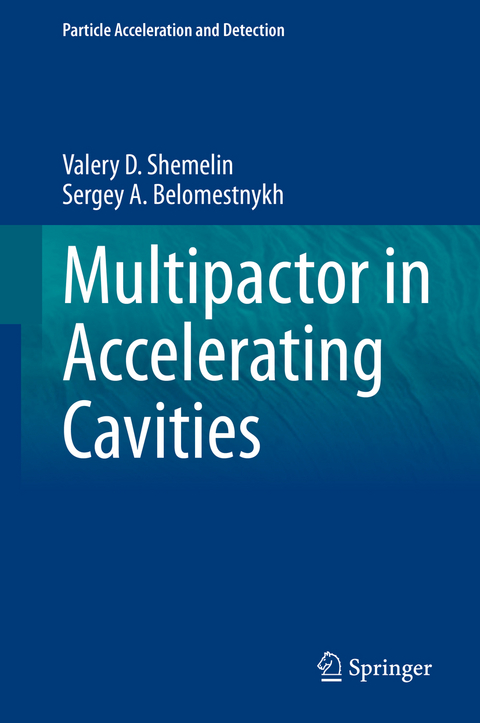
Multipactor in Accelerating Cavities
Springer International Publishing (Verlag)
978-3-030-49437-7 (ISBN)
Dr. Valery Shemelin received his M.S. degree from Novosibirsk State Technical University and his Ph.D. degree from Budker Institute of Nuclear Physics (Novosibirsk, Russia) where he worked for many years on accelerator projects. Dr. Shemelin joined Cornell University's Laboratory for Elementary Particle Physics in 2000 where he stayed until retirement in 2014. His research interests are concentrated mainly around designing accelerating structures and cavities, optimization of their geometries, studying multipactor discharge, along with simulations and measurements of RF properties of various material at room and cryogenic temperatures. In particular, he made significant contributions to developing superconducting radio frequency cavities and higher order mode absorbers for Energy Recovery Linac (ERL) project at Cornell. Dr. Sergey Belomestnykh is a Senior Scientist, Chief Technology Officer and Head of Applied Physics and Superconducting Technology Division at Fermi National Accelerator Laboratory (Fermilab). He received his M.S. degree from Novosibirsk State Technical University and his Ph.D. degree from Budker Institute of Nuclear Physics (Novosibirsk, Russia) where he worked for many years and was involved in several accelerator projects developing radio frequency (RF) systems. He joined Cornell University's Laboratory for Elementary Particle Physics in 1994, working on developing superconducting RF (SRF) systems for Cornell Electron Storage Ring (CESR) and Cornell ERL as a CESR RF group leader. In 2010, he joined Brookhaven National Laboratory. In his capacity as a Scientists and Superconducting RF group leader, Dr. Belomestnykh led development of SRF and RF systems for several projects. Since 2015, he is with Fermilab overseeing research and operations of a large Division and coordination technology development throughout the laboratory. He is an Adjunct Professor at the Department of Physics and Astronomy, Stony Brook University. Dr. Belomestnykh is a Fellow of the American Physical Society and a recipient of the 2015 IEEE NPSS Particle Accelerator Science and Technology Award " for achievements in the science and technology of RF and SRF for particle accelerators .
Part 1. Multipactor in a planar gap.- Chapter 1. Existence zones for multipactor discharge.- Chapter 2. Generalized phase stability in multipacting.- Chapter 3. Ping-pong modes.- Chapter 4. Numerical simulations of multipactor.- Part 2.. Multipactor in crossed RF fields.- Chapter 5. Introduction of accelerating RF cavities.- Chapter 6. Effect of RF cavity magnetic field on multipactor in a gap.- Chapter 7. Multipactor near the cavity equator.- Chapter 8. One-point multipactor in crossed fields of RF cavities.- Part 3. Multipacting-free cavities and transitions between cavities and beam pipes.- Chapter 9. Optimized shape cavities free of multipacting.- Chapter 10. Multipacting-free transitions between cavities and beam pipes. Theorem of minimal electric field.
| Erscheinungsdatum | 17.08.2020 |
|---|---|
| Reihe/Serie | Particle Acceleration and Detection |
| Zusatzinfo | XI, 134 p. 1 illus. |
| Verlagsort | Cham |
| Sprache | englisch |
| Maße | 155 x 235 mm |
| Gewicht | 389 g |
| Themenwelt | Naturwissenschaften ► Physik / Astronomie ► Atom- / Kern- / Molekularphysik |
| Naturwissenschaften ► Physik / Astronomie ► Hochenergiephysik / Teilchenphysik | |
| Schlagworte | beam physics • cavity beam-pipe transition • Electron dynamics in accelerating cavities • Multipactor simulation code • Ping-pong multipacting • RF cavity • SNS elliptic cavity • TESLA cavity |
| ISBN-10 | 3-030-49437-3 / 3030494373 |
| ISBN-13 | 978-3-030-49437-7 / 9783030494377 |
| Zustand | Neuware |
| Haben Sie eine Frage zum Produkt? |
aus dem Bereich


